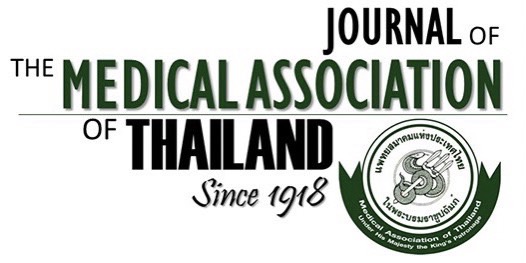Prevalence of Single Nucleotide Mutation in Clarithromycin Resistant Gene of Helicobacter pylori: A 32-Months Prospective Study by Using Hybridization Real Time Polymerase Chain Reaction
Piyathida Hansomburana MD*, Siriwat Anantapanpong MD*, Siam Sirinthornpunya MD*, Kitti Chuengyong MD*, Jarin Rojborwonwittaya MD*
Affiliation : * Department of Medicine, Rajavithi Hospital, College of Medicine, Rangsit University, Bangkok, Thailand
Polymerase chain reaction (PCR) for detection of single nucleotide mutations in 23S rRNA gene of clarithromycin resistance Helicobacter pylori were investigated worldwide. In Thailand, the prevalence of these mutations had not been extensively investigated. The authors conducted a 32-months prospective study to estimate the prevalence of clarithromycin resistant Helicobacter pylori and to compare the sensitivity and specificity of hybridization real time PCR for 23S rRNA gene of Helicobacter pylori detection with the combination of rapid urease test, immunohistochemistry straining and Helicobacter pylori culture. A total of 200 patients with endoscopic examination with gastric biopsy were enrolled from January 2006 to September 2008. Eight gastric specimens were biopsied and performed rapid urease test, immunohistochemistry straining for Helicobacter pylori, Helicobacter pylori culture and hybridization real time PCR for 23S rRNA dectection, as well as single nucleotide mutation detection, such as G2111A, A2115G, A2142G, A2143G and A2144G. The clarithromycin susceptibility of Helicobacter pylori isolated was determined by E-test. The prevalences of clarithromycin, amoxicillin, metronidazole and tetracycline resistance were 13.8%, 21.3%, 55.0% and 8.8%, respectively. Most of clarithromycin resistant Helicobacter pylori (81.8%) had very high minimal inhibition concentration (MIC) more than 256 μg/ml. The resistance to mutation gene at A2142G was found in 4 patients (36.4%). Two patients were found to have multiple mutations at G2111A, A2115G and A2144G (18.2%). The sensitivity, specificity, positive predictive value, negative predictive value, likelihood ratio to test positive and likelihood ratio to test negative of hybridization RT-PCR in detecting 23S rRNA gene of Helicobacter pylori was 95.6%, 94.4%, 93.2%, 96.7%, 17.2 and 4.6, respectively. In conclusion A2142G mutation was most common and associated with high MIC. Hybridization RT-PCR had good sensitivity and specificity to detect 23S rRNA gene, as well as clarithromycin resistance gene mutation of Helicobacter pylori.
Keywords : Clarithromycin resistance, Helicobacter pylori, 23S rRNA, Real time polymerase chained reaction



